Lyndon B. Johnson (LBJ) is one of the most interesting and controversial presidents of the United States. Born in a family which was facing financial difficulty, Johnson struggled as a student before becoming a teacher for a brief period. He joined politics as a secretary to a Congressman and in 1937, at the age of 28, he was elected to the U.S. House of Representatives from Texas’s 10th district. He was elected to the Senate in 1948 and in 1953, he became the youngest Senate Minority Leader. Johnson became the Vice President of John F. Kennedy despite being involved in a bitter campaign against him for the Democratic ticket. Soon after Kennedy’s assassination on November 22, 1963, he was sworn in as the 36th President of the United States. Lyndon Johnson was known to be extremely hardworking and ambitious. He was a skillful politician famous for his intimidating technique of persuasion called The Treatment. Know more about the family, life, political career, presidency and death of Lyndon B. Johnson through these 10 interesting facts.
#1 HIS FAMILY FACED FINANCIAL DIFFICULTY AFTER HIS FATHER LOST HIS MONEY IN COTTON SPECULATION
Born on 27th August 1908 in a small farmhouse near Stonewall, Texas, Lyndon Baines Johnson was the eldest of five children of Samuel Ealy Johnson Jr. and his wife Rebekah Baines. He had one brother, Sam Houston Johnson; and three sisters Rebekah, Josefa, and Lucia. The small town of Johnson City in Texas was founded by and named after James Polk Johnson, uncle of Lyndon and nephew of his grandfather Samuel Ealy Johnson, Sr.
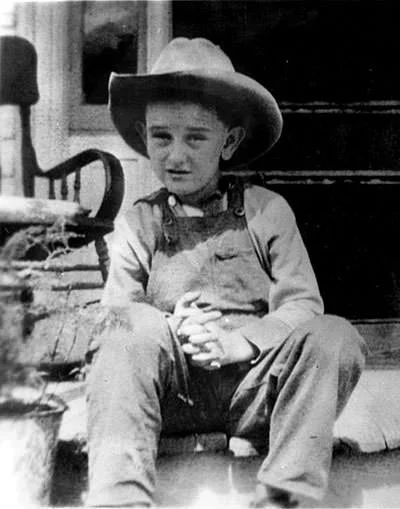
Lyndon’s father Samuel Johnson served as a Democratic member of the Texas House of Representatives for five terms. However, he lost money in cotton speculation leading to a financial crisis for the Johnson family. He struggled to raise his two sons and three daughters and thus Lyndon grew up under difficult circumstances. He was a confident and talkative boy who actively participated in public speaking, debate and baseball. Lyndon graduated from Johnson City High School in 1924 at the age of 15. He was president of his six-member senior class.
#2 HIS FIRST CAREER WAS AS A TEACHER
Lyndon’s parents used their savings to send him to summer courses at Southwest Texas State Teachers College. However, he left the school just weeks after his arrival and instead moved to Southern California. Here, he did odd jobs and briefly worked in a cousin’s law office. Lyndon then returned to Texas and performed manual labor on a road crew. He became involved in drinking and fights; and was even arrested. In 1927, he refocused his energies on a teaching career and was accepted to Southwest Texas State Teachers College. Here, Johnson participated in debate and campus politics; and edited the school newspaper, The College Star.
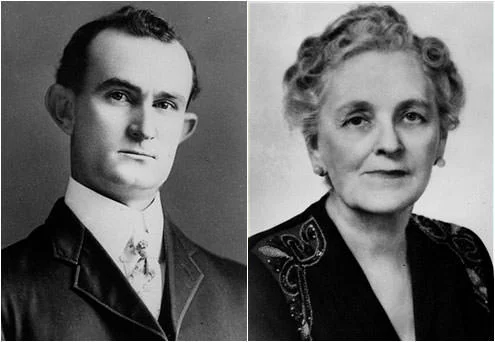
For 9 months in 1928–29, he paused his studies to teach Mexican-American children at the segregated Welhausen School in Cotulla. Later, after signing the Higher Education Act of 1965, President Johnson remembered the pain he felt while teaching these children realizing that “college was closed to practically every one of those children because they were too poor”. Johnson graduated from college in 1930 and worked as a teacher for four years. He then decided to pursue politics during the Great Depression.
#3 HIS WIFE LADY BIRD JOHNSON PLAYED A KEY ROLE IN HIS POLITICAL SUCCESS
In 1934, Johnson met Claudia Alta Taylor, more known by her nickname “Lady Bird”. She was the daughter of a wealthy businessman named Thomas Jefferson Taylor. Johnson proposed to Claudia on their first date and the couple married on November 17, 1934, at St. Mark’s Episcopal Church in San Antonio, Texas. They had two daughters: Lynda Bird, born in 1944; and Luci Baines, born in 1947. Johnson, his wife and their two daughters all share the same initials, LBJ. He even named his dog Little Beagle Johnson.
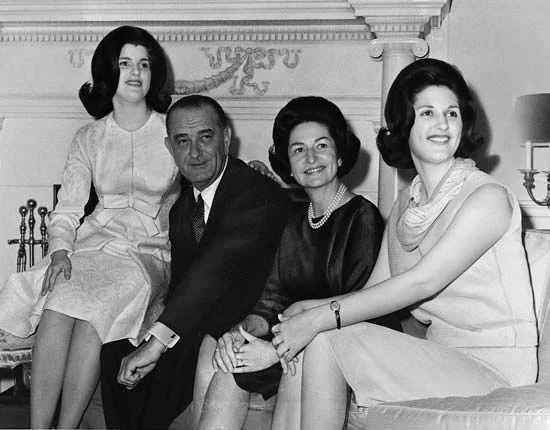
When Lyndon decided to run for Congress, Lady Bird provided the money to launch his campaign, taking $10,000 of her inheritance from her mother’s estate. During the 1964 presidential election, she traveled through eight Southern states in her own train to promote the Civil Rights Act. As First Lady, Lady Bird championed the Head Start education program as well as an environmental initiative aimed at the “beautification” of highways, neighborhoods and parks.
#4 HE BROUGHT ELECTRICITY TO TEXAS HILL COUNTRY OF HIS YOUTH
On recommendation of his father, Johnson was appointed legislative secretary to Congressman Richard M. Kleberg in 1931. He worked in this position till 1935, when he was appointed head of the Texas National Youth Administration. In this role, he helped create educational and job opportunities for young people. In 1937, at the age of just 28, Johnson was elected to the U.S. House of Representatives from Texas’s 10th district. He won federal housing projects and dams for his district bringing electrical power to the lonely Texas Hill Country of his youth. He termed this as his proudest achievement in his life. The influential Democratic Congressman Sam Rayburn had served in the Texas legislature with Johnson’s father. He became a close friend and mentor of Lyndon; and aided Johnson’s rapid rise within Congress.
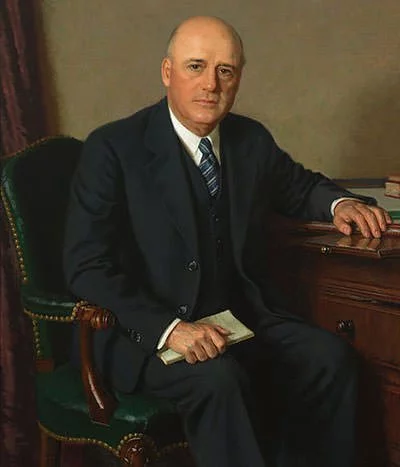
#5 JOHNSON NARROWLY ESCAPED DEATH IN WORLD WAR II DUE TO A STROKE OF LUCK
During World War II, Lyndon B. Johnson was appointed a Lieutenant Commander in the U.S. Naval Reserve, in June, 1940. He worked on production and manpower problems that were slowing the production of ships and planes. He also participated as an observer on a number of bomber missions. On a tour of the southern Pacific, Johnson boarded a B-26 bomber called the Wabash Cannonball for his mission. Just before takeoff, he left the plane to use the washroom. On his return, he boarded another plane, the Heckling Hare. During the bombing mission, the Heckling Hare was forced to run back to base, while the Wabash Cannonball crashed into the sea, killing all on board. In 1942, Lyndon Johnson was awarded the Silver Star, the third-highest US combat medal for a fact-finding mission. He was presented the medal personally by General Douglas MacArthur, to whom he reported.
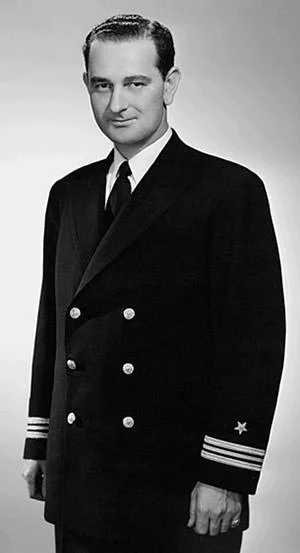
#6 HE WAS GIVEN THE NICKNAME “LANDSLIDE LYNDON”
In 1948, Johnson ran for U.S. Senate. He was up against the popular Texas governor Coke Stevenson and George Peddy in the Democratic primary. In a highly controversial result with voter fraud allegations on both sides, Johnson was finally announced the winner by 87 votes out of 988,295 votes which were cast. The Democratic State Central Committee voted to certify Johnson’s nomination by a majority of one, 29 to 28. His critics gave him the derisive nickname “Landslide Lyndon” due to this controversial victory. In 1953, Johnson was chosen by fellow Democrats to be the Senate Minority Leader. Aged 44, he was the most junior Senator ever elected to this position. As the Democratic Party won the 1954 U.S. Senate elections, Johnson then became the Senate Majority Leader. He served in this position from 1955 to 1961.
#7 JOHNSON IS FAMOUS FOR HIS INTIMIDATING TECHNIQUE OF PERSUASION CALLED THE TREATMENT
Lyndon B. Johnson has been called the most effective Senate Majority Leader in history. He was unusually proficient at gathering information and he knew exactly where every Senator stood on issues, his philosophy and prejudices, his strengths and weaknesses and what it took to get his vote. He is famous for his tactics called The Treatment. The Johnson Treatment could last anywhere from ten minutes to four hours. It came whenever and wherever he found a fellow politician within his radius. He had all the research on his target in his pocket.
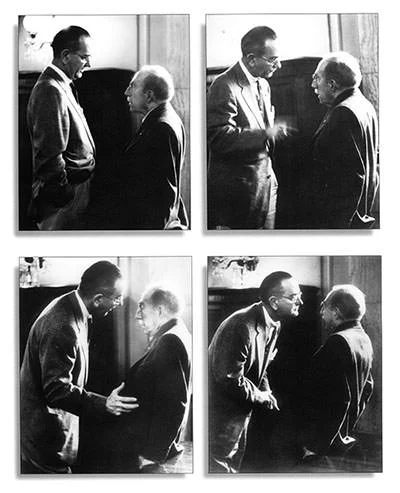
“Its tone could be and included supplication, accusation, cajolery, exuberance, scorn, tears, complaint and the hint of threat.” Interjections from the target were rare and even if they were attempted, Johnson would anticipate them before they could be successfully delivered. All the elements LBJ used, “mimicry, humor, and the genius of analogy” rendered the target stunned, helpless, and obedient. It was this intimidating technique of persuasion that made Johnson one of the most feared and influential politicians of the time; and helped him get legislation passed like no other politician could.
#8 JOHNSON WAS SWORN IN AS PRESIDENT A COUPLE OF HOURS AFTER KENNEDY’S ASSASSINATION
In the Democratic race to the 1960 U.S. presidential election, Lyndon B. Johnson was defeated by John F. Kennedy. Kennedy still offered Johnson the vice-presidential nomination. This was despite the fact that John’s brother Robert F. Kennedy hated Johnson for his personal attacks on the Kennedy family during the bitter Democratic campaign. John Kennedy won the election making Johnson the 37th Vice President. Johnson’s influence as Vice President was limited as Kennedy’s advisers, especially his brother, made sure to keep him on the sidelines.
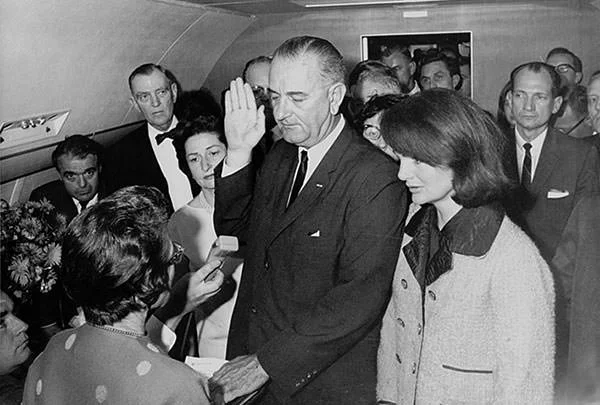
On November, 22, 1963, President Kennedy was assassinated in Dallas, Texas, while traveling in a motorcade. Johnson was only two cars behind Kennedy when the shots rang out. Just 2 hours and 8 minutes later, Lyndon B. Johnson was sworn in as the 36th President of the United States. He then won the 1964 presidential election by defeating the Republican nominee Barry Goldwater by a landslide. Johnson served as President till January 20, 1969. He didn’t run for re-election even though he was constitutionally permitted to do so as he had served for less than 24 months of President Kennedy’s term.
#9 JOHNSON WAS A CIVIL RIGHTS HERO BUT HE IS ALSO ACCUSED OF RACISM
The foreign policy of President Johnson was marred by the unsuccessful and costly U.S. involvement in the Vietnam War. By the end of his presidency, he could scarcely travel anywhere without facing antiwar protests. However, Johnson’s domestic policy was hugely successful. It included legislation aimed to eliminate racial injustice like the influential Civil Rights Act of 1964 and the 1965 Voting Rights Act; as well as his War on Poverty which included many social welfare programs to aid the poor.
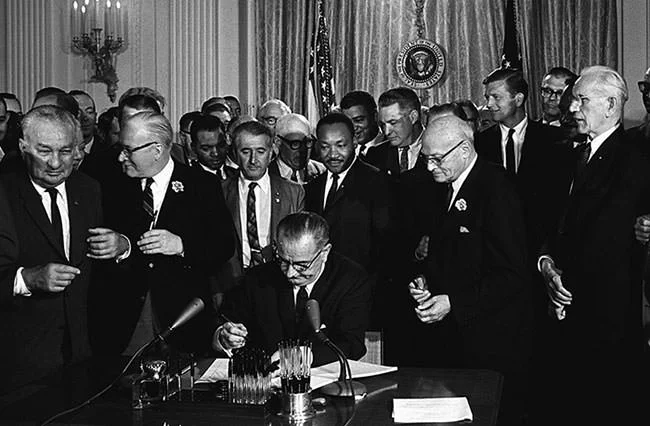
LBJ was successful in reducing unemployment and poverty; and bringing about economic growth. Johnson is seen as a civil rights hero as he fought for and was able to pass the most sweeping civil rights legislation since the post-Civil War Reconstruction era. However, he was a Southern man of his time and often used racist language including the word “nigger”. There are many people who consider him to be a racist. Despite that, Johnson formally ended American apartheid.
#10 HE IS USUALLY RANKED AMONG THE 10 GREATEST AMERICAN PRESIDENTS
Post-presidency, Johnson went home to his ranch in Stonewall, Texas. In 1971, his memoir titled, The Vantage Point: Perspectives of the Presidency 1963–1969, was published. Johnson was a chain smoker who smoked around 60 cigarettes per day. Before becoming President, on July 2, 1955, he suffered a near-fatal heart attack after which he gave up smoking. However, after leaving presidency, Johnson resumed the habit. In April 1972, he fell victim to a second heart attack while visiting his daughter, Lynda, in Charlottesville, Virginia. He suffered from ill health after that and often experienced severe pain.
Lyndon B. Johnson died due to a massive heart attack on January 22, 1973 in Stonewall, Texas, U.S. He was 64 years old. Johnson was known to be tireless and extremely ambitious. He worked 18-20 hours a day without break and took part in very few, if any, leisure activities. He was a tough boss throughout his career, often demanding long workdays and work on weekends. Despite early criticism of his handling of Vietnam War, Johnson is now often ranked among the top 10 American presidents due to his exceptional work on the domestic front.

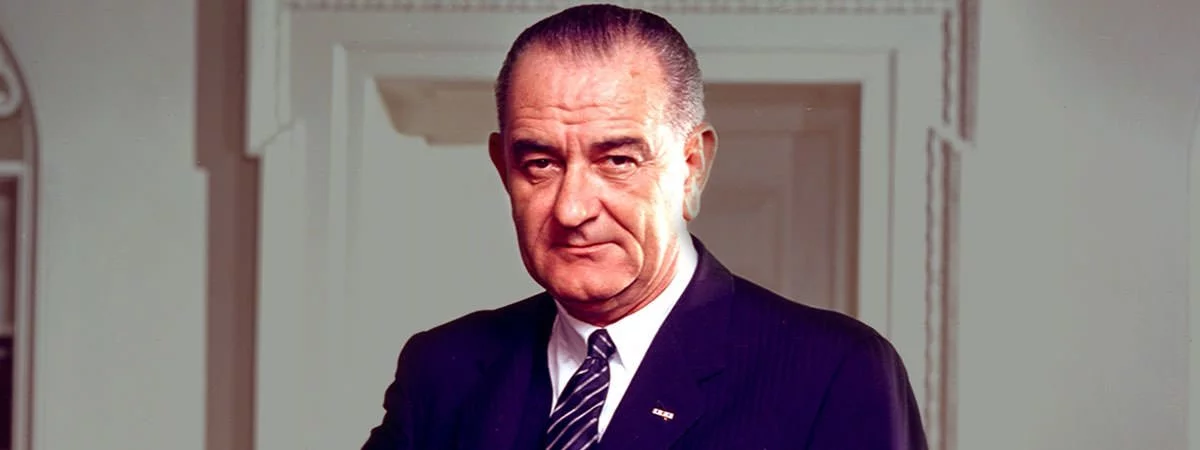
need more interesting facts.